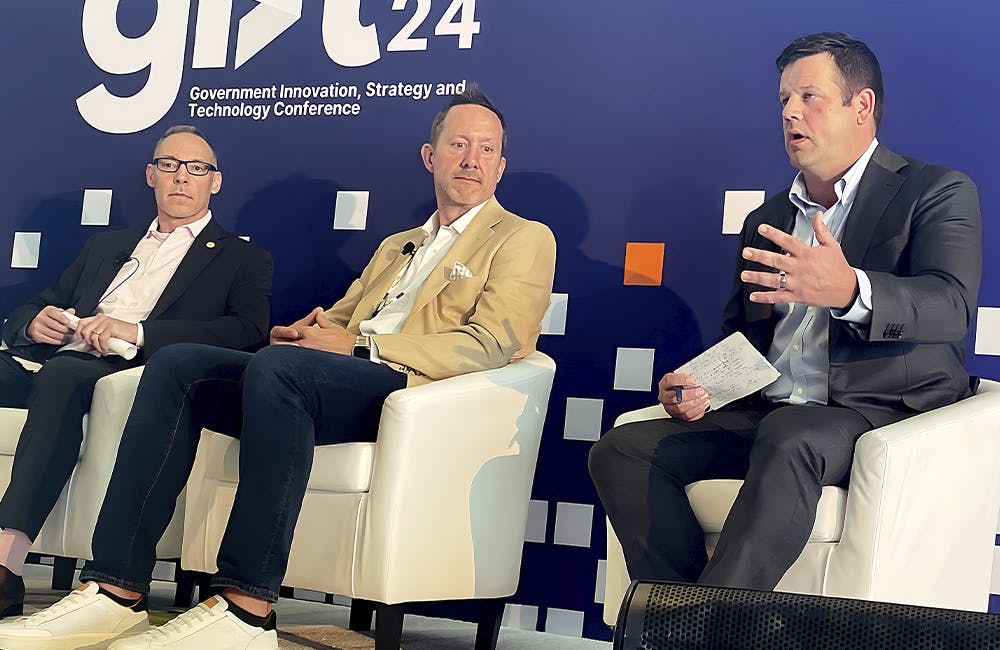Navy Invests in Additive Manufacturing Workforce to Match Pentagon Strategy
DOD issued its Additive Manufacturing Strategy in 2021 to integrate with the private sector and create agile uses of the technology.

The Navy made a significant cultural and financial investment opening the Naval Aviation School for Additive Manufacturing last month in Danville, Virginia in partnership with the Institute for Advanced Learning and Research.
Navy leaders at Sea-Air-Space 2024 lauded the opening as a step towards further adopting additive manufacturing – a technology the sea service hopes will speed delivery times on strategic development programs and keep platforms and systems operating in combat.
NAVAIR Additive Manufacturing Program Manager Ted Gronda listed multiple examples where additive manufacturing techniques have saved the Navy time and money by producing parts no longer in production due to external factors like the COVID-19 pandemic.
The Defense Department issued its Additive Manufacturing Strategy in 2021 with a focus on integrating with industry and creating agile uses of the technology. As part of it, Pentagon leaders challenged the services to expand proficiency in additive manufacturing.
Gronda highlighted the Danville facility as a move toward that challenge.
The new schoolhouse will cover additive manufacturing theory, practice and production. Students will “learn point-of-need manufacturing using desktop and industrial AM polymer systems currently installed at Marine Aviation Logistics Squadrons (MALS) and Fleet Readiness Centers (FRC) and aboard aircraft carriers,” according to a Navy release announcing its opening.
A key outlier for this training program over other NAVAIR schools is the coursework is 95 percent agnostic to a system command or branch of service. School houses typically specialize in specific systems, but to meet the Pentagon Additive Manufacturing Strategy, the Navy sought to maintain agility.
The service wants to develop additive manufacturing leaders proficient and flexible enough to both build a new attack submarine as well as produce a bolt for landing gear on a deployed aircraft carrier, Gronda said.
Navy leaders are making a big bet on additive manufacturing. They see it as a key component to ramp up submarine production as the service expands its Virgina-class attack submarines and Columbia-class ballistic submarines.
When the Navy opened the Additive Manufacturing Center of Excellence in Virginia, service leaders said additive manufacturing would have to fill in production roles to keep production on time, an area where the Navy has lagged in recent years.
In fact, additive manufacturing is one of the top areas where the service looks to invest as part of its larger $2.3 billion program to stability to submarine industrial base.
The opening of the schoolhouse will produce more Navy leaders to shepherd that investment and improve the Navy’s efficiency and flexibility in additive manufacturing, according to Gronda.
This is a carousel with manually rotating slides. Use Next and Previous buttons to navigate or jump to a slide with the slide dots
-

How TMF is Helping Agencies Accelerate Tech Modernization
The program launched a new AI pilot to expedite TMF applications as agency leaders urge more to consider applying for funds.
4m read -

Defense Board to Pitch Solutions for Closing Tech Talent Gaps
Defense Innovation Board members cite need to modernize people management the same way government modernizes technology.
4m read -

How Agencies are Upskilling the Workforce in AI
Federal officials are putting in place new training and education methods to ensure its overall workforce understands the technology.
3m read -

A Prepared Workforce is Key to Cyber Resiliency
Strong training strategies and emphasizing cyber hygiene basics enhance security practices at federal agencies.
2m read








